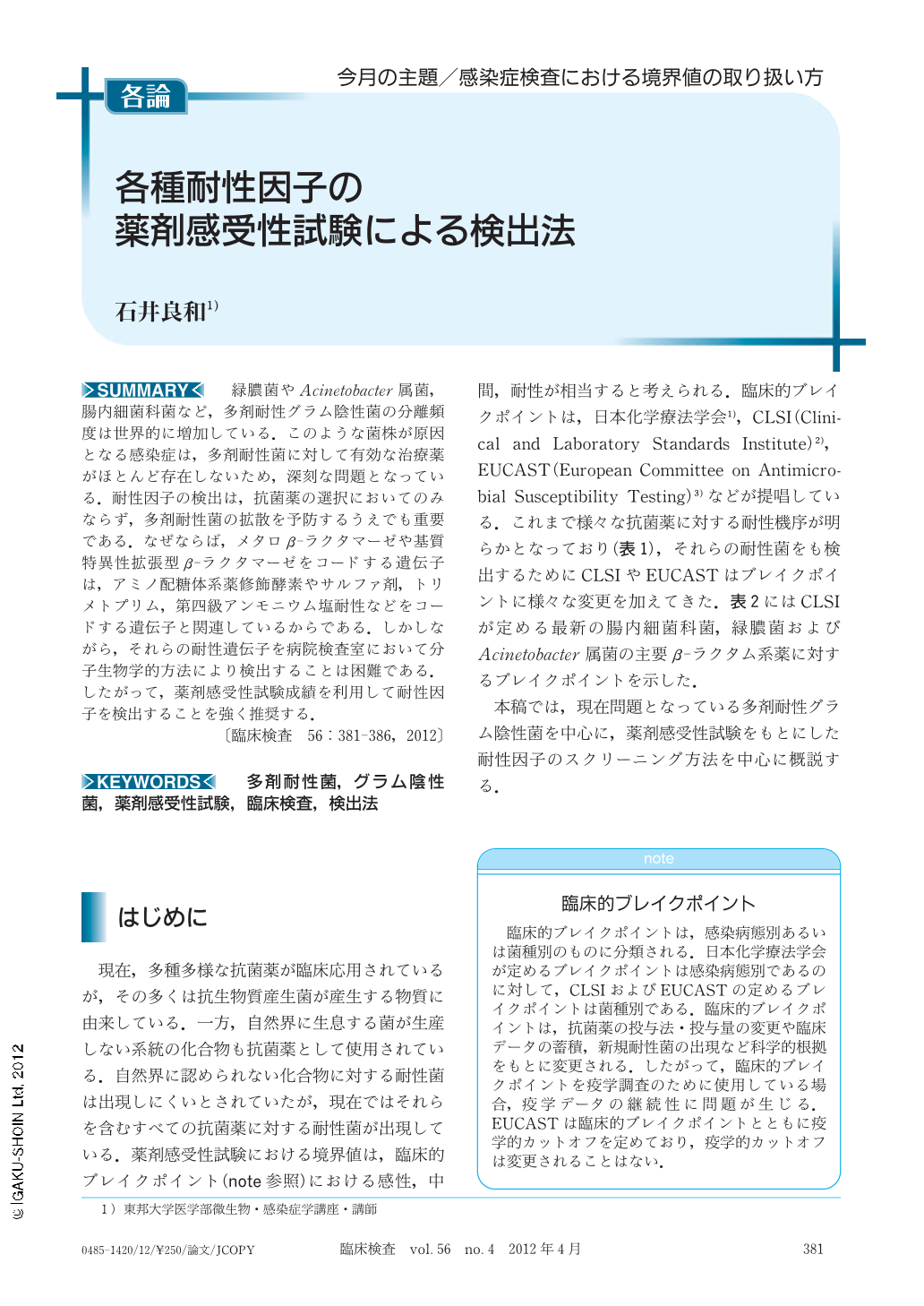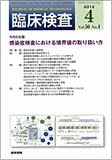Japanese
English
- 有料閲覧
- Abstract 文献概要
- 1ページ目 Look Inside
- 参考文献 Reference
緑膿菌やAcinetobacter属菌,腸内細菌科菌など,多剤耐性グラム陰性菌の分離頻度は世界的に増加している.このような菌株が原因となる感染症は,多剤耐性菌に対して有効な治療薬がほとんど存在しないため,深刻な問題となっている.耐性因子の検出は,抗菌薬の選択においてのみならず,多剤耐性菌の拡散を予防するうえでも重要である.なぜならば,メタロβ-ラクタマーゼや基質特異性拡張型β-ラクタマーゼをコードする遺伝子は,アミノ配糖体系薬修飾酵素やサルファ剤,トリメトプリム,第四級アンモニウム塩耐性などをコードする遺伝子と関連しているからである.しかしながら,それらの耐性遺伝子を病院検査室において分子生物学的方法により検出することは困難である.したがって,薬剤感受性試験成績を利用して耐性因子を検出することを強く推奨する.
The isolation frequency of multidrug-resistant Gram-negative organisms such as Pseudomonas aeruginosa, Acinetobacter spp., Enterobacteriaceae is increasing worldwide. The infection caused by these kind of organisms is a serious problem because few antibiotics are effective for multidrug-resistant organisms. Detection of the drug resistance factor is important not only for the selection of antibiotics but also for preventing the spread of resistant organisms. Metallo-β-lactamases or the extended-spectrum β-lactamase encoding gene is associated with other resistance genes such as aminoglycosides modification enzymes, sulfa drugs, trimethoprim, quaternaty ammonium compounds etc. However it is very difficult to detect the resistance gene by molecular biological techniques in the clinical laboratory. Accordingly, I strongly recommend the detection of resistance factors by the result of drug susceptibility testing.

Copyright © 2012, Igaku-Shoin Ltd. All rights reserved.


